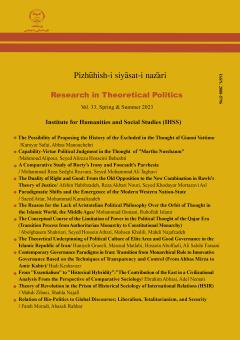Today, because of the development of communication and information technologies, the world in which we live is called the virtual world. This virtual world is heavily influenced by "Web2.0 technologies". Web2.0 technology refers to electronic and Internet media that can
More
Today, because of the development of communication and information technologies, the world in which we live is called the virtual world. This virtual world is heavily influenced by "Web2.0 technologies". Web2.0 technology refers to electronic and Internet media that can increase citizen participation in various affairs, in particular, political affairs. This technology as a second generation of Internet services has a social dimension that emanates in the form of social media, and therefore the impact of these technologies on the performance of the government is important. This article seeks to answer this question: What impact Web2.0 technologies can have on government performance? And how it affects the government? The hypothesis of the article suggests that Web 2.0 technologies potentially transformed the way and function of the traditional government and led to the emergence of a new kind of government. In the literature on communications and politics science, this kind of government is referred to as the "web.2.0 government". This study shows that Web2.0 leads to an increase in the level of government performance. Indeed, government 2.0 has not only influenced by the integration of new communication and information technologies but also benefited from the effects of these technologies. The mechanisms by which the web2.0 technologies increase the level of government performance are: Creating open culture, increasing citizen participation, promoting government transparency, citizen-centered government, and promoting democracy. In this paper, the question and research hypothesis has been evaluated using library resources and the descriptive-analytic method.
Manuscript profile


